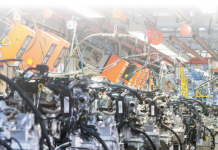Holden has posted its biggest ever financial loss in 2013, following the announcement that it would cease manufacturing in Australia by the end of 2017.

According to the media release by Holden, the company has registered a net loss of $553.8 million after tax in the calendar year 2013, which it attributed to the $500.4 million one-off impairment charge on property, plant and equipment along with $122.3 million charge for employee separation costs in 2013.
The $553.8 million loss posted by Holden in 2013, brings the company’s total losses to an astonishing $1.28 billion over the past eight years, despite the fact that it received more than $1.8 billion over the last 12 years in taxpayer support, reports Car Guide.
Although the dire financial results were largely down to its announcement of shutting local manufacturing operation, the company still believes that it made the right decision to get back on track to sustainable and ongoing profitability into the future.
“Clearly there are significant costs associated with our decision to cease domestic manufacturing of vehicles in Australia by the end of 2017. These costs drove the financial loss for Holden in 2013. We are mindful of the impact on our employees and our financial results, but it was the right decision. Manufacturing vehicles in Australia is, unfortunately, unsustainable,” Holden Chief Financial Officer Jeff Rolfs said.
“All three domestic OEMs have now announced they will cease domestic vehicle manufacturing as auto manufacturing in Australia faces a perfect storm of negative influences: a persistently high Australian dollar; one of the most fragmented and competitive markets in the world; and higher costs compared to other manufacturing source countries.”
Mr Rolfs said the company was fully committed to providing adequate support for employees affected by the decision.
“Last year, we recorded the initial allocations of our employee separation costs with further charges expected in this area,” Mr Rolfs said.
“We are determined to work with all levels of government and the rest of the industry to deliver support, training and links to future opportunities for Holden employees impacted by our decision.”
At the height of its power, Holden employed more than 20,000 workers across seven manufacturing facilities. Today, the company has just one car assembly line and 1760 workers in Australia.


















